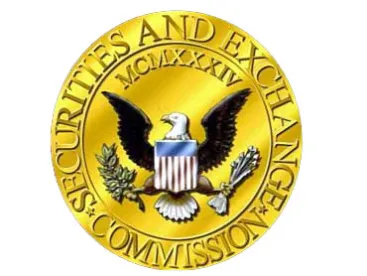Summary
The third quarter of 2016 saw the US Securities and Exchange Commission (SEC) carry forward its momentum from an active second quarter. Recent developments include new SEC Compliance & Disclosure Interpretations (C&DI) and new rule proposals with practical implications for both practitioners and marketplace participants.
SEC Publishes New C&DI Clarifying Filing Requirements in Connection with Employee Purchases of Issuer Securities Through 401(k) Plan
On September 22, 2016, the SEC published a new Securities Act of 1933 (Securities Act) C&DI (Question 139.33). This new guidance provides that an issuer that offers its employees the opportunity to make open-market purchases of the issuer’s own securities within its 401(k) plan will not be deemed to be offering its securities to employees for purposes of the Securities Act provided the conditions of the C&DI are met.
This guidance provides clarity on an issue that has been a source of uncertainty in recent years. In a published Q&A from a May 8, 2007, American Bar Association Technical Session Between the SEC Staff and the Joint Committee on Employee Benefits, the SEC took the position that registration was required under the Securities Act for a 401(k) plan through which an issuer’s employees were able to make open-market purchases of the issuer’s securities, even though the issuer did not provide for a specific company stock fund under the plan. As a result, reporting companies were required to file registration statements with respect to securities bought by their own employees in a 401(k) plan open “brokerage window” even if the issuer was not promoting or encouraging such purchases.
The new C&DI represents a shift from the position the SEC took in the 2007 session. The guidance specifically addresses whether employee purchases of an issuer’s stock through a self-directed brokerage window involve an offer of employer securities that requires registration under the Securities Act. As a general matter, the SEC will consider the extent of the employer company’s involvement in such open-market purchases by employees. Specifically, the new C&DI notes that the SEC Staff would not consider such open-market purchases by employees to constitute an offering of securities subject to Securities Act registration if the following conditions are met:
-
The purchases are made in the context of a self-directed brokerage window in which 401(k) plan participants could trade in the employer’s securities with employee contributions.
-
The employer/issuer does no more than:
-
Describe the self-directed brokerage window as part of the investment alternatives available under the 401(k) plan
-
Make payroll deductions
-
Pay administrative expenses not in any way tied to particular investments selected by employees
-
The employer/issuer does not take any action to draw employees’ attention to the possibility of investing in the employer/issuer’s securities through the self-directed brokerage window.
-
This new guidance provides welcome clarity on the issue. An issuer complying with the new C&DI will not be considered to be engaged in the offer of securities and, therefore, will not be required to file a registration statement and a corresponding Form 11-K.
The C&DI is limited in its language, however, to an instance where the employees are making such purchases with “employee contributions.” It is not clear at this time if the SEC Staff will extend this interpretation to securities purchased during a self-directed brokerage window by an employee participant in a 401(k) plan with an employer contribution match feature.
SEC Proposes Rule Amendment to Implement T+2 Trade Settlement Cycle
On September 28, 2016, the SEC voted to propose an amendment to Rule 15c6-1(a) promulgated pursuant to the Securities Exchange Act of 1934 (Exchange Act). The proposed rule amendment would shorten the settlement cycle for broker-dealer transactions from three business days after a trade (i.e., T+3) to two business days after a trade (i.e., T+2). Although the amended rule would shorten the standard trade settlement cycle, broker-dealers would remain free to agree to a longer settlement timeframe by contract.
Industry groups such as the T+2 Industry Steering Committee have been advocating for this rule change for some time. Moving to a T+2 trade settlement cycle would align the United States with most major European markets, including the United Kingdom.
In addition to aligning the United States with other markets, the SEC’s proposed rule amendment highlights several benefits of transitioning to a T+2 settlement cycle. Potential benefits include reducing market participants’ exposure to credit, market and liquidity risk. The SEC’s release also notes that the rule change would reduce systemic risk by “decreas[ing] the total number of unsettled trades that exists at any point in time, as well as the total market value of all unsettled trades.”
In its discussion of alternatives to the proposed amendment, the SEC mentions that it also considered a shift to a T+1 standard settlement cycle. Although the SEC determined not to move to a T+1 cycle at this time because of the operational investments and changes such a transition would entail, the release expressly states that “[t]he Commission preliminarily believes that . . . a move to a T+1 standard settlement cycle could have similar qualitative benefits of market, credit and liquidity risk reduction as a move to a T+2 standard settlement cycle.” Presumably, the costs of transitioning to a T+1 standard settlement cycle may decrease as market participants make the investments necessary to accommodate a T+2 standard settlement cycle. The SEC could revisit a T+1 standard settlement cycle in the future.
The SEC has requested public comments on the proposed rule amendment. The comment period is open for 60 days after publication of the rule in the Federal Register, and comments can be submitted electronically at https://www.sec.gov/rules/proposed.shtml.
SEC Updates Policy Regarding “Tandy” Representations in Comment Letters
On October 5, 2016, the SEC announced a new policy, effective immediately, with respect to the “Tandy” language in SEC comment letter responses. The SEC’s policy since the mid-1970s has been to require companies that receive SEC comment letters in connection with Exchange Act filings to acknowledge in writing that the disclosure in the filing was the responsibility of the company and to expressly state that the company would not raise the SEC’s review of the filing and acceleration of effectiveness as a defense in any legal proceeding. Although reporting companies still remain responsible for the accuracy and adequacy of the disclosure in their filings, the SEC will no longer ask for express representations in connection with the issuance of a comment letter. Going forward, comment letters will include the following statement: “We remind you that the company and its management are responsible for the accuracy and adequacy of their disclosures, notwithstanding any review, comments, action or absence of action by the staff.”
SEC Denies No-Action Relief in Connection with Proxy Access Proposal
On July 21, 2016, the SEC for the first time denied a company’s request for no-action relief pursuant to Rule 14a-8(i)(10) in connection with a shareholder’s proxy access proposal. H&R Block, Inc., amended its bylaws to implement a proxy access right in June 2015 in response to a proxy access proposal (2015 Proposal) put forth by James McRitchie, the publisher of CorpGov.net. The company’s revised bylaws permit a shareholder (or shareholder group) that owns 3 percent of the company’s shares and has held those shares for at least three years to submit a proposal for inclusion in the company’s proxy materials. The 3 percent/three-year proxy access right adopted by H&R Block is consistent with bylaws adopted by other companies that received no-action relief from the SEC in connection with a shareholder proposal requesting adoption of a proxy access bylaw.
Although Mr. McRitchie withdrew the 2015 Proposal, he submitted another proxy access proposal (2016 Proposal) in connection with H&R Block’s 2016 annual meeting of shareholders seeking revisions to the proxy access bylaws adopted by H&R Block in 2015. The 2016 Proposal requested the following revisions to H&R Block’s proxy access bylaws:
-
Setting the number of shareholder-nominated candidates eligible to appear in proxy materials at 25 percent of the directors then serving or two, whichever is greater
-
Inclusion of loaned securities when determining if the ownership threshold has been met, as long as the nominating shareholder or group represents that it (i) has the legal right to recall those securities for voting purposes, (ii) will vote the securities at the annual meeting and (iii) will hold those securities through the date of the annual meeting
-
Elimination of the cap on the number of shareholders that can aggregate their shares to achieve the 3 percent ownership threshold
-
Repeal of the limitation on the re-nomination of shareholder nominees based on the number or percentage of votes received at any annual meeting
H&R Block requested no-action relief on the grounds that the adoption of the proxy access bylaw in 2015 amounted to “substantial implementation” of the 2016 Proposal. In denying the company’s request for no-action relief, the SEC stated that it was unable to conclude that the company’s proxy access bylaw “compares favorably” with the 2016 Proposal. The core of the argument presented by Mr. McRitchie is that the 2016 Proposal did not request that H&R Block implement a proxy access bylaw; rather it requested specific revisions to the company’s existing bylaws. H&R Block could not show substantial implementation of the 2016 Proposal by pointing to a bylaw provision that did not include any of the revisions requested in the 2016 Proposal.
As a result of this new development, companies that have already adopted proxy access bylaws likely will see an increase in the number of shareholder proposals seeking specific revisions to those bylaws. The SEC’s denial of no-action relief in this case shows that a company facing such a proposal will not be able to point to its existing proxy access bylaws as evidence of substantial implementation of the shareholder proposal where those bylaws do not include any of the specific provisions requested by the shareholder proposal.
SEC Proposes Rule and Form Amendments to Require Hyperlinks to Exhibits in Filings
On August 31, 2016, the SEC published a proposed rule that would require registrants that file registration statements and periodic reports subject to the exhibit requirements of Item 601 of Regulation S-K, as well as registrants that file on Forms F-10 or 20-F, to include a hyperlink to each exhibit listed in the exhibit index of those filings. The proposed rule would amend Item 601 of Regulation S-K and Rules 11, 102 and 105 of Regulation S-T to require filers to include a hyperlink to each filed exhibit identified in the exhibit index. Issuers that have filed exhibits on paper pursuant to a temporary or continuing hardship exemption under Rules 201 or 202 of Regulation S-T or pursuant to Rule 311 of Regulation S-T would not be required to provide a hyperlink to the exhibits filed on paper. Affected forms would include (i) Securities Act Forms S-1, S-3, S-4, S-8, S-11, F-1, F-3, F-4, SF-1 and SF-3, and (ii) Exchange Act Forms 10, 10-K, 10-Q, 8-K and 10-D. Forms F-10 and 20-F would also be subject to the new requirement.
In order to make the rule change effective, the SEC is also proposing that all registrants submit all of the affected filings in HTML format. In its notice of proposed rulemaking, the SEC notes that more than 99 percent of filings made on the affected forms in 2015 were filed in HTML.
If adopted, the rule will make it easier for investors and other users of registrant information to access exhibits. Currently, someone reviewing a registrant’s filings must make note of where the exhibit was filed and then separately locate that filing in order to view the exhibit. The inclusion of hyperlinks would make registrant information more readily accessible to investors and other EDGAR users.
The SEC has requested public comments on the proposed rule amendment. The comment period is open for 45 days after publication of the rule in the Federal Register, and comments can be submitted electronically at https://www.sec.gov/rules/proposed.shtml.
SEC Forum on Fintech Innovation
The SEC announced that it will hold a public forum at the SEC’s Washington, DC, headquarters on November 14, 2016, to discuss financial technology (Fintech) innovation in the financial services industry. The purpose of the forum is to promote collaboration among regulators, entrepreneurs and industry experts to evaluate how best to incorporate Fintech into the regulatory environment. Forum panels will discuss topics such as blockchain technology (i.e., the technology underlying cryptocurrencies such as Bitcoin), automated investment advice, online marketplace lendin







 />i
/>i

